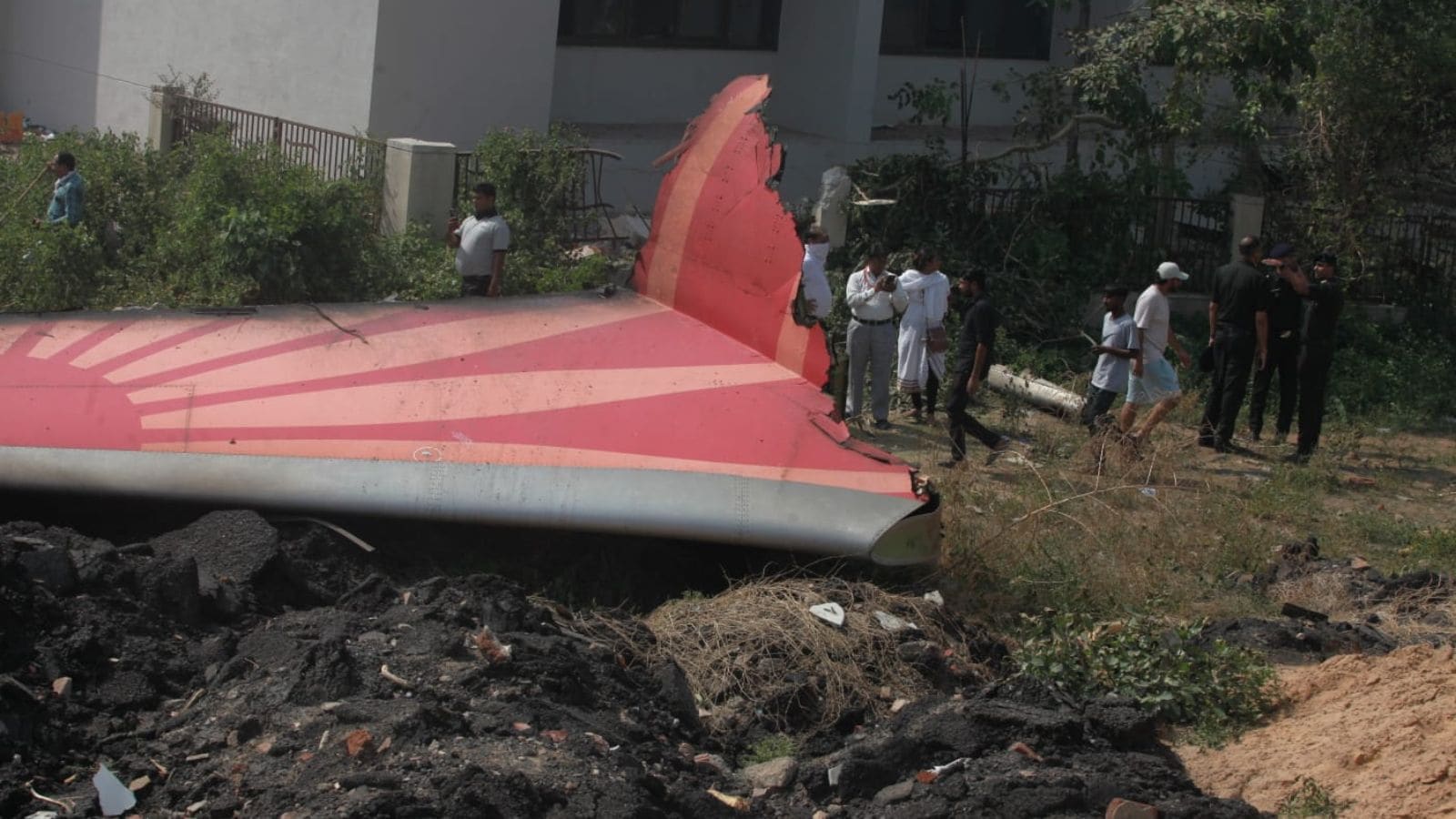One of the black boxes of the Air India Boeing 787-8 aircraft has been recovered from the crash site in Ahmedabad by the on-site team of the Aircraft Accident Investigation Bureau (AAIB), which is leading the investigation into the worst aviation disaster involving an Indian airline in decades.
The flight data recorder (FDR), one of the two black boxes of the aircraft, was found on a rooftop. Its recovery is expected to shed light on the factors that led to the crash. The search for the other black box, cockpit voice recorder (CVR), is still on, it is learnt. Both black boxes are expected to play a critical role in the air crash investigation.
This is the first wide-body crash for an Indian airline in four decades, and the first crash of a Boeing 787 globally. According to flight tracking data, the signal from the aircraft was lost at an altitude of just 625 feet, moments after takeoff. It then descended with a vertical speed of 475 feet per minute and crashed.
According to the aviation safety regulator, the Directorate General of Civil Aviation (DGCA), the pilots gave a Mayday call, signalling severe distress, to the Ahmedabad airport air traffic control (ATC) upon takeoff, after which the plane crashed outside the airport perimeter.
“The Flight Data Recorder (Black Box) has been recovered within 28 hours from the accident site in Ahmedabad by AAIB. This marks an important step forward in the investigation. This will significantly aid the enquiry into the incident,” Civil Aviation Minister K Ram Mohan Naidu announced on X.
Earlier on Friday, the plane’s digital video recorder (DVR) was also retrieved from the crash site, with some reports confusing it with the black box. The Ministry of Civil Aviation (MoCA), however, clarified that it was not the black box.
The black boxes on the Boeing 787 aircraft are located at the rear end. The purpose of the FDR is to record flight data on numerous parameters of aircraft operations, while the CVR records the flight crew’s voices as well as other sounds inside the cockpit, including engine noise, stall warnings, landing gear extension and retraction, and other clicks and pops. Communications with air traffic control, automated radio weather briefings, and conversation between the pilots and ground or cabin crew are also recorded.
Story continues below this ad
“Both the FDR and the CVR have proven to be valuable tools in the accident investigation process. They can provide information that may be difficult or impossible to obtain by other means. When used in conjunction with other information gained in the investigation, the recorders are playing an ever-increasing role in determining the Probable Cause of an aircraft accident,” the US National Transportation Safety Board (NTSB) states on its website.
With the data retrieved from the FDR, investigators can generate a computer-animated video reconstruction of the flight. The investigators can then visualise the aircraft’s attitude, instrument readings, power settings, and other characteristics. This animation enables the investigating team to visualise the last moments of the flight before the accident.
“The FDR records many different operating conditions of the flight. By regulation, newly manufactured aircraft must monitor at least 88 important parameters such as time, altitude, airspeed, heading, and aircraft attitude. In addition, some FDRs can record the status of more than 1,000 other in-flight characteristics that can aid in the investigation. The items monitored can be anything from flap position to auto-pilot mode or even smoke alarms,” the NTSB states.
The AAIB is undertaking the investigation, while the NTSB would also be involved in the detailed probe, given that the aircraft is manufactured by an American company, Boeing, and was manufactured in Seattle. A UK AAIB team is also going to help with the investigation, and so are Boeing and other major component manufacturers like GE (engine manufacturer). According to the aircraft accident investigation protocol, the probe report should be finalised within a year.


